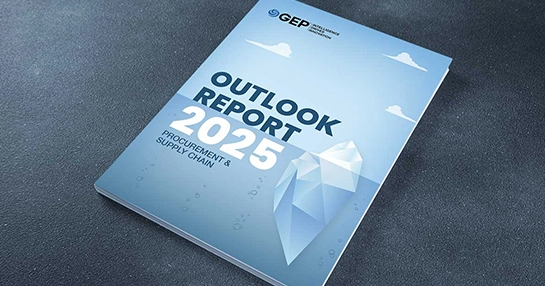
Trump Tariffs: Implications on Trade and 5 Key Supply Chains Strategies to Navigate Them
- Companies must diversify their supply base beyond traditional markets to mitigate tariff impacts and secure favorable long-term pricing arrangements.
- Data-driven decision making through AI and analytics is crucial for optimizing costs and predicting supply chain disruptions in the new trade environment.
- Businesses that implement proactive strategies like nearshoring and strengthen supplier relationships will be better positioned to navigate trade policy uncertainties.
February 07, 2025 | Supply Chain Strategy
With the Donald Trump administration in the U.S. imposing tariffs on imports from China, Mexico and Canada, companies across the globe are preparing for tariff wars and input cost escalations while also looking for cost-mitigation strategies.
These new tariffs are expected to increase costs for raw materials and components, compelling businesses to reassess sourcing and production strategies. Industries such as automotive, clean energy, and consumer goods are particularly vulnerable, facing potential disruptions and higher expenses.
The uncertainty surrounding these tariffs complicates long-term planning, as companies must navigate fluctuating trade policies and potential retaliatory actions.
For Those Who Have Failed to Plan Ahead
We don’t know yet if the tariffs will continue to remain in force or get diluted as a result of reciprocal tariffs. But irrespective of how the scenario turns out, planning ahead will help enterprises navigate the turbulent waters. Those who haven’t planned will have to deal with rising production costs, shrinking profit margins, and supply chain delays and bottlenecks.
5 Key Supply Chain Strategies for Businesses to Navigate the Trump Tariff
Think Beyond China and Canada
Businesses that depend on Chinese and North American suppliers must diversify. It's not just about exploring alternative markets like Southeast Asia, Eastern Europe, and Latin America for materials and manufacturing, but also about negotiating long-term contracts to lock in favorable pricing to adjust for any further increase in tariff.
Nearshoring and Onshoring
With international trade tensions rising, many businesses are opting for nearshoring (moving production to neighboring countries) or onshoring (bringing it back home). What happens in this case is that the supply chain becomes shorter, leading to faster delivery and fewer supply chain disruptions. Organizations can also see a reduction in transportation costs and better compliance with local regulations.
Also Read: Challenges of Supply Chain Nearshoring
Smarter Cost Management
With tariffs driving up input expenses, businesses must decide whether to absorb costs or pass them on to consumers. Three quick strategies would be:
- Adjust product classifications to qualify for lower tariff rates
- Companies with strong brand loyalty may pass on costs, while others may have to absorb them.
- Use financial instruments to protect against currency fluctuations and commodity price spikes.
Invest in AI and Data Analytics for Smarter Decision-Making
While predictive analytics can help enterprises forecast demand and potential disruptions before they occur, while AI-powered procurement tools automate cost optimization and sourcing strategies. Companies that use data-driven decision-making are witnessing faster adaptability and fewer supply chain disruptions. Plus, an advanced supply chain management system can provide real-time tracking of shipments, inventory, and supplier performance.
Strengthen Supplier Relationships
We know we keep on repeating this, but collaboration really is the key. Now more than ever, businesses must work closely with their suppliers to develop flexible and adaptable strategies. And this is why:
- Collaborative planning ensures shared forecasting and risk management.
- Supplier diversification programs help reduce over-reliance on specific regions.
- Long-term contracts with contingency clauses create stability in volatile trade conditions.
Also Read: Supplier Relationship Management Guide
Conclusion
Businesses can’t afford to sit on the sidelines while trade policies evolve. Lobbying efforts and direct engagement with policymakers can influence decisions that impact industries. Businesses can do a few things on their own — which include joining industry coalitions, staying updated on trade negotiations, and adapting business strategies based on policy shifts.
Tariff wars can reshape global trade, and businesses are rethinking how they source, produce and price their goods. The companies that thrive in this new environment are ones which are adaptable. Are you ready?



